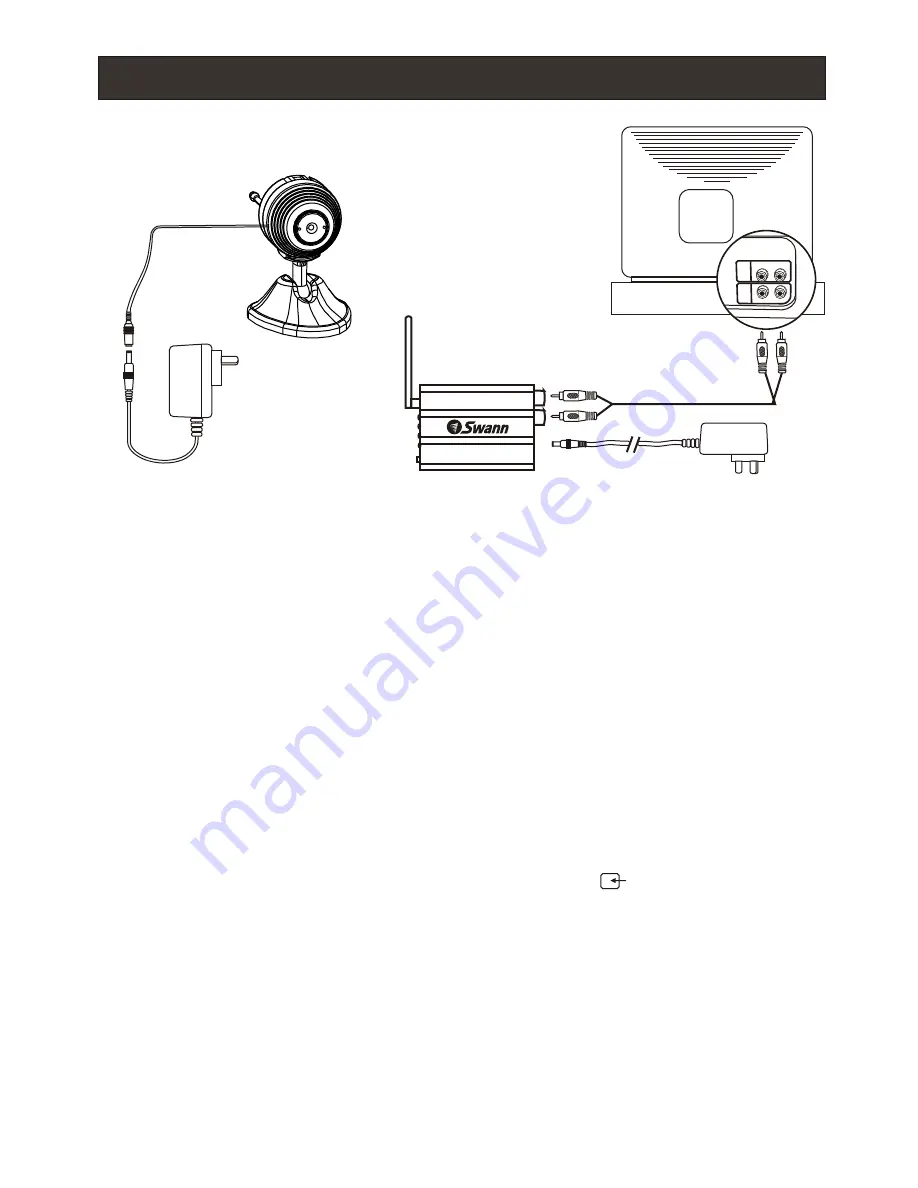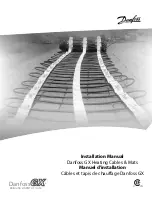
The Camera features an omni-directional antenna which is most effective when used
in the UPRIGHT position.
1)
Connect both the Camera and the Receiver to their respective power adaptors.
2)
Connect the Receiver to the equipment you wish to view the camera on (monitor,
AV TV, VCR, DVR etc) using the supplied RCA A/V-cable. If you have an A/V TV
with RCA sockets you will need to switch the TV to the AV channel to view the
camera. To connect the Receiver to your VCR, you will need to turn the VCR to
the AV Input selection and turn your TV onto the channel you would normally use
to view a tape or movie on your VCR. The AV channel may be activated by a
button on your remote that is marked with this symbol , or L1 or L2 or
possibly AV, AV1 or AV2. Check the manual of your TV or VCR for more
information on using its AV inputs.
3)
After connecting both the Camera and the Receiver make sure the receiver is
switched to the same channel as the camera. Press the Channel Select button
on the receiver until the LED is lit. Obtain the best picture by adjusting the
position of the Camera and Receiver unit to suit. Try slightly different locations of
either unit for optimum results.
Camera with Stand and Hood
Camera Power Adaptor
Poor Picture:
Realign antennas until image quality improves, slightly adjust the
position of the Camera or Receiver.
Lines only:
no clear picture: Check to confirm there is no microwave oven or other
2.4GHz equipment
ie; Cordless Telephones, Wireless Baby
Monitors, Wireless LAN equipment etc . Make sure the Receiver is on the correct
channel for the particular camera.
Picture ghosting or interference:
No picture:
check the receiver to confirm it is powered and make sure the A/V
connection of the Receiver is not plugged into the Audio Out socket. Make sure the
Receiver is on the correct channel. Check to ensure the camera is plugged in and has
power. Check that the channel on the receiver is the set to the same as the camera
you wish to view.
Red haze over picture:
In some cases where the sun shines into the front of the
camera a faint red glow can be seen. Move the camera to a shaded location, or fit a
hood to stop sunlight entering the camera lens directly.
Foreground is dark while background is too bright:
If the camera is looking from a
dark area towards a light area in some cases the automatic exposure can find it
difficult to balance the image correctly. Change the location of the camera so that the
point of greatest interest has the largest area of the image (if you want to see the
bright area, move the camera so that almost all of the screen shows this area. If you
want to see the darker area, move the camera so that most of the image shows this
area)
Change the location of the Camera to allow the
minimum of solid objects such as walls between it and the receiver as illustrated at the
bottom of the page. Try changing to one of the other channels using the instructions on
the previous page and check the signal quality again.
operating close by
Some home appliances such as Wireless LANs,
2.4GHz portable telephones and Microwave ovens operate on or near the 2.4GHz
frequency. If you receive interference from such an appliance, try moving the Camera
or Receiver to location further away from the appliance or in the event of interference
from a Wireless LAN device, try changing the Wireless LAN to a different channel to
improve the signal quality.
Monitor or TV
xx
Signal passes
through 3 walls
Signal passes
through 3 walls
Signal only passes
through 2 walls!
Signal only passes
through 2 walls!
Your home or office
Your home or office
Troubleshooting, hints and tips
Setting up your system
DVR or MONITOR
With RCA Sockets
UT
O
N
I
O
V D
I E
I
V
O
E
D
AUD O
I
U
A
I
D O
Receiver
Power Adaptor
C
H
4
C
H
4
Receiver
Receiver
RCA A/V Cable


























